Trip to Samckhe-Javakheti
5 Locations
Samtskhe-Javakheti (cargo სამცხე-ჯავახეთი), - edge (mhare) of Georgia, is located in the south of the country, borders with Armenia and Turkey.
Samtskhe-Javakheti is the historical region of Georgia, in the pre-Christian centuries was part of Iberia, from the II century. BC. e., Iberia lost the southern part of its territories in the struggle against the Armenian kingdoms and Samtskhe-Javakhetia became part of the ancient state of Great Armenia.
In 888-1008, Samtskhe and Javakheti were one of the regions of the Tao-Klardgetian kingdom or the "Kingdom of Georgia," a medieval Georgian state in the west of the Transcaucasus.
In the 9th - early 10th centuries Bagrat III of the Bagrationi dynasty, who became the Abkhazian king, united all the Georgian princedoms, thereby becoming the first king of united Georgia. Samtskhe and Javakheti were reunited to unified Georgia in 1008.
In 1490, after the disintegration of a single Georgia, the territory of Samtskhe and Javakheti was part of the Georgian principality of Samtskhe-Saatabago.
In 1590-1625, the territory of the Samtskhe-Saatabago kingdom was steadily declining, the kingdom had to fight against the expansion of the Ottoman Empire, finally Samkhi statehood was eliminated and the territory was occupied by the Ottoman Empire.
In 1828-1829, after the Russo-Turkish War, Samtskhe and Javakheti were liberated and later included in the Tiflis province.
Today it is part of Georgia and includes the regions of Meskhetia and Javakhetia.
The main historical attraction is the cave monasteries of Vardzia (founded by the queen Tamara [6] in 1185) and Vanis Kwabebi (VIII century). In the province is Borjomi resort with world-famous mineral water.
The Baku-Tbilisi-Ceyhan oil pipeline and the South Caucasus gas pipeline pass through the region.
The administrative center is Akhaltsikhe.
In the province there are 5 cities, 6 urban-type settlements, 268 villages.
Cities: Akhaltsikhe (17,903 people), Borjomi (1,054 people), Akhalkalaki (8,295 people), Ninotsminda (5,144), Valais (3,646 people, census of 2014);
Urban settlements: Aspindza (3,300 people), Akhaldaba (2,200 people), Bakuriani (1,900), Abastumani (1,200 people), Adigeni (1,200 people), Tsagveri (1,000), Bediani (900 people) .), The Bakurian Andesite (400 people, the estimate of 2014).
Locations:
5 Locations
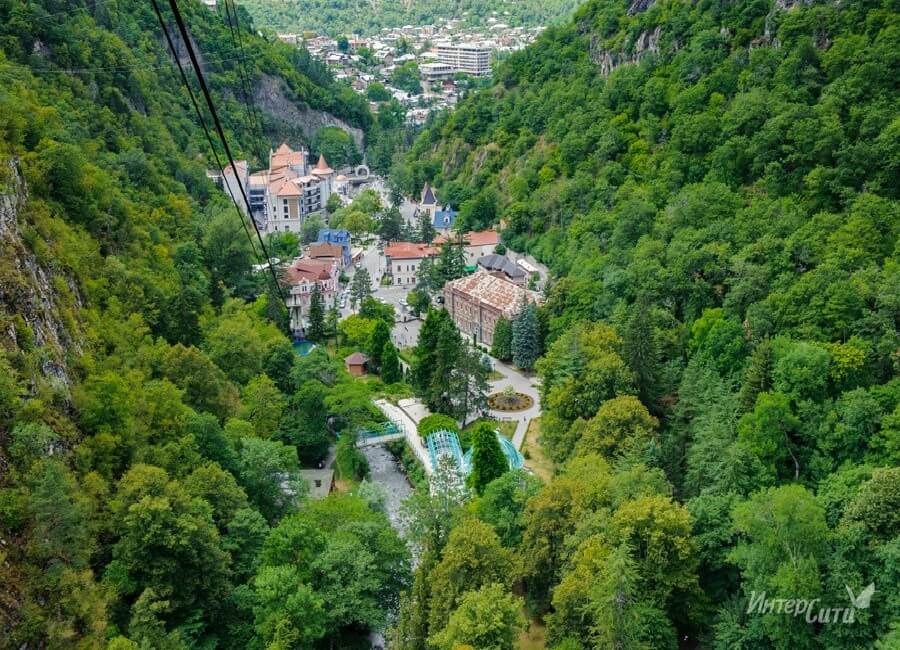
Borjomi Resort
The Borjomi resort is located in the southeastern part of Georgia, in the gorge of the Kura River, at an altitude of 810-850 m above sea level. Borjomi belongs to a group of low mountain resorts and is surrounded by mountain ranges covered with coniferous and broad-leaved forests. The climate is temperate in both summer and winter.
Borzhomi is famous for its therapeutic mineral water, which is used as a drinking water for diseases of the gastrointestinal tract, biliary tract, metabolism, kidneys and in the form of baths - for cardiovascular diseases, diseases of the nervous system and respiratory organs. Archaeological excavations here found stone baths, which indicates that the healing properties of mineral water were known and used in ancient times.
In Borjomi gorge there are more than 200 historical monuments: fortresses, churches, monasteries. A special place among the historical monuments is the palace of the Russian tsars of the Romanovs, built in the late 18th century.
Russian Version:
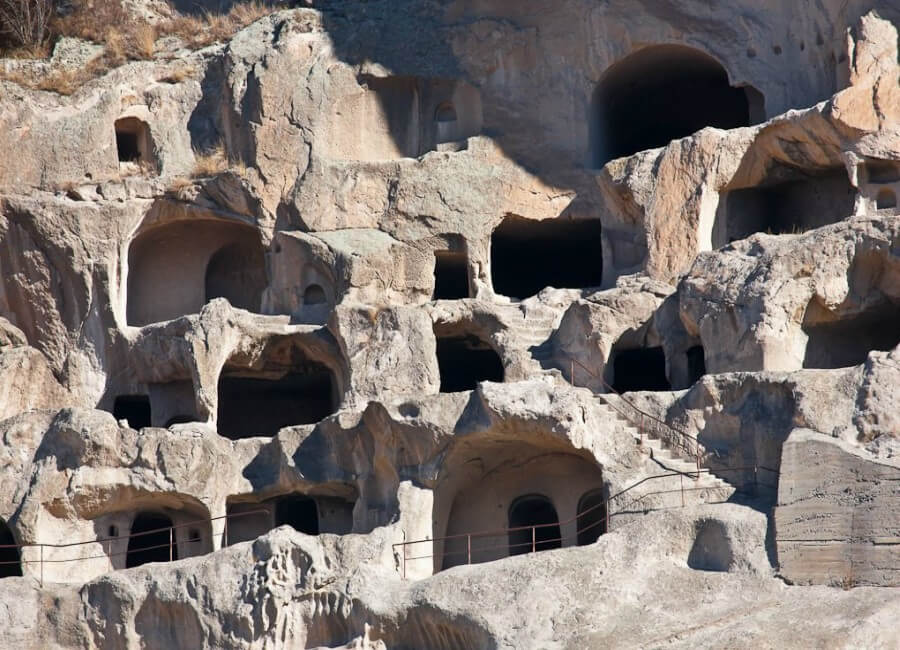
Vardzia
Vardzia is a cave monastery complex of the 12th-13th centuries in the south of Georgia, in Javakheti. An outstanding monument of medieval Georgian architecture. It is located in the Aspindza region of Samtskhe-Javakheti, in the valley of the river Kura (Mtkvari), about 100 km south of Borjomi, near the village of the same name.
For 900 m along the left bank of the Kura in the sheer tuff wall of Mount Erusheti (Bear), up to 600 rooms are carved: churches, chapels, living cells, storerooms, baths, refectory, treasures, libraries. The premises of the complex go 50 meters deep into the rock and rise to a height of eight floors. Secret passages that connected the rooms, the remains of the water pipe and the irrigation system were preserved.
Russian Version:
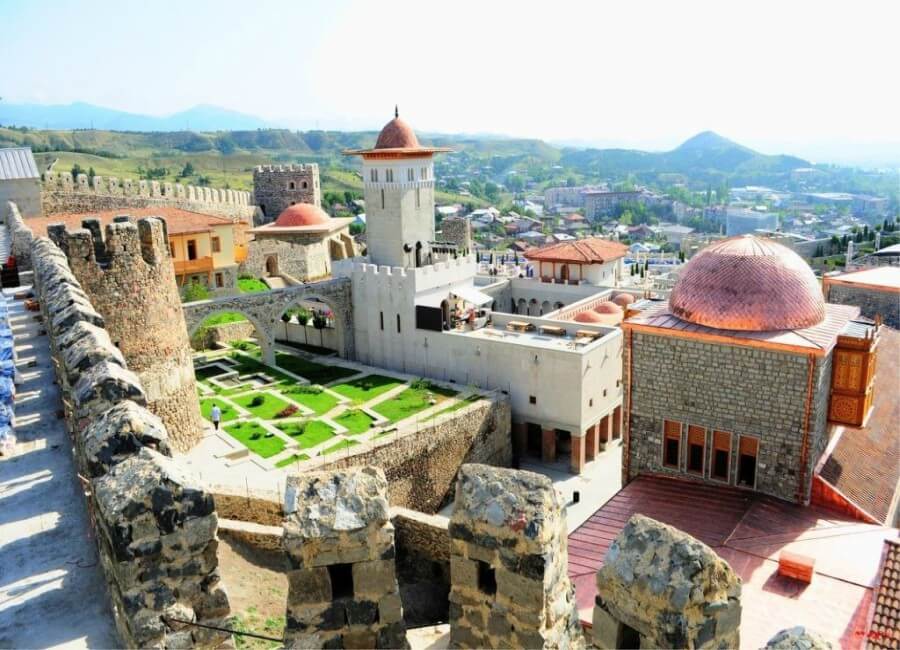
Akhaltsikhe -Fortress Rabat
Akhaltsikhe is a small town in the south of Georgia, the administrative center of the Samtskhe-Javakheti region. The name of the city is literally translated as a "new fortress" and it's quite logical, because the main architectural dominant of the city is the large fortress Rabat located on an area of about 7 hectares. Built in the 16th century by the Turks, it served for several centuries as the northern stronghold of the Ottoman Empire, but was lost along with the lands of Georgia during the Russian-Turkish war of 1828-29.
During the war with the Turks in August 1828, a big battle took place near the walls of Akhaltsikhe between Russian troops under the command of General IF Paskevich (9,000 men) and a 30,000-strong Turkish army under the general command of Kios-Mohammed Pasha. The Turkish troops were defeated and retreated, after which the fortress was occupied by Russian troops. In February 1829, Turkish troops tried to repulse the fortress. The defense of the fortress of Akhaltsikhe under the leadership of General Muravyov lasted from February 20 to March 4, 1829. Having beaten the first assault, the garrison held for another 12 days, after which reinforcements approached them, forcing the Turks to retreat.
In 2011-12, a large-scale reconstruction of fortresses was carried out, the area around Rabat was landscaped, tourism infrastructure appeared in the form of cafes, souvenir shops, a museum and information center and, as a result, today the fortress in Akhaltsikhe is a very popular tourist site that annually visits about 100 thousand people.
Russian Version:
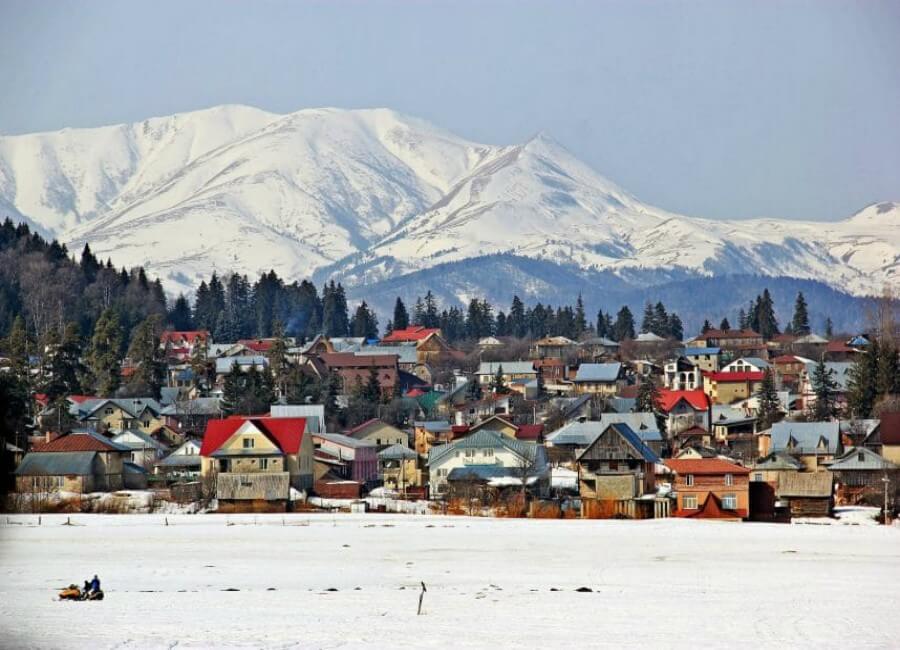
Bakuriani
Ba
Bakuriani is a famous high mountain Georgian resort, which is located in Borzhomi municipality of Samtskhe-Javakheti region practically in the center of the country.
The village is connected with the Borjomi motorway and the narrow gauge railway. Ski resort, located at an altitude of about 1700 m above sea level on the northern slope of the Trialeti Range.
Together with Borjomi, he claimed to host the 2014 Winter Olympics. The village is also famous for its mineral springs and botanical garden of the Georgian Academy of Sciences. Near Bakuriani there is an andesite deposit around which the Bakurian Andesite settlement has grown. The Bakuriani ski resort is a winter resort, located 180 km west of Tbilisi in the Borjomi Gorge, surrounded by the Caucasian mountain range.
From the tops of the Bakurian mountains originate Borjomi springs. Before wells and bottling enterprises from the village - 30 minutes drive. Here is developed both winter and summer tourism. In the Soviet years, Bakuriani was the traditional venue for competitions in winter sports: slalom, bobsled, biathlon and jumping from a springboard. This place was a favorite resting place of the Russian royal family and here the royal palace is still preserved
In Bakuriani there are many ski slopes. For beginners there is a trail with a length of a drag lift 300 m, slope of the mountain 10-12 degrees. The two-stage "Kohta-1" route has a total length of 1500 m. The upper, 400 m are quite complex and reach a gradient of 52 degrees. Inexperienced skiers are recommended "Plateau". "Kohta-2" is also a two-stage track with a total length of 3000 m. Steep slopes are replaced by lighter slopes. Several tracks are certified. Currently, the resort continues construction work, it is expected to open new lifts and trails. Among the fans of skiing, skiing on the Tskhratsko pass (13 km from Bakuriani) to the altitude of 2454 m
Russian Version:
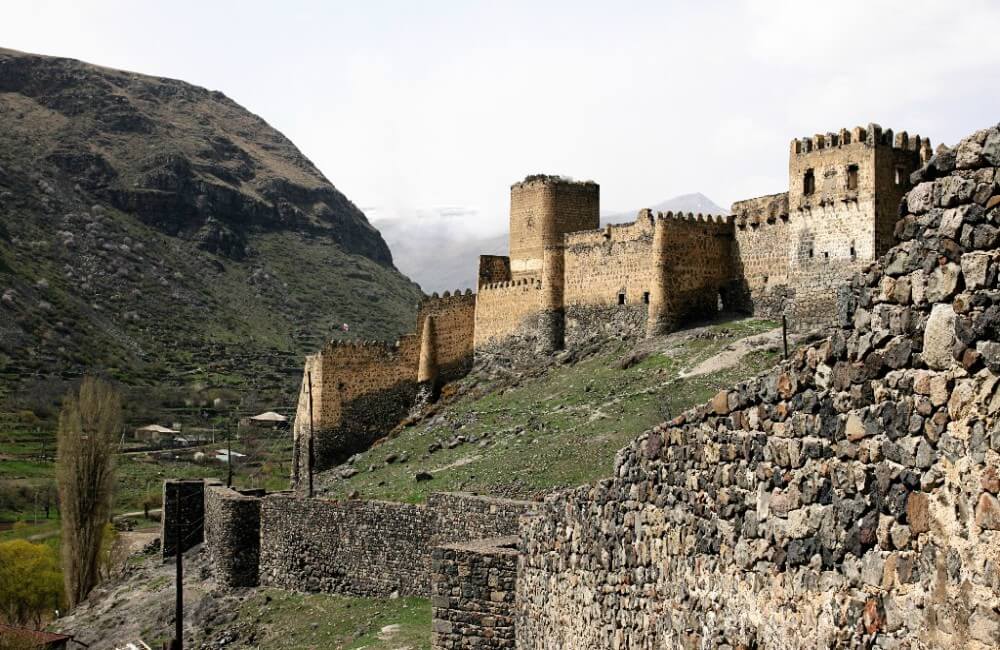
Khertvisi fortresses
Khertvisi (in georgian ხერთვისის ციხესიმაგრე) is one of the oldest and best preserved fortresses of the Georgian Middle Ages. It is located in the Samtskhe-Javakheti region, in the southern part of Georgia.
The fortress of Khertvisi is located on a high rocky hill in the gorge at the confluence of the Kura and its right tributary - the Paravani River.
The chronicler Leonti Mroveli mentions Khertvisi - which he considers one of the first cities of Georgia - in connection with the campaigns of Alexander the Great (IV century BC). In the era of the early Middle Ages the city fell into decay and only in the X-XI centuries the newly rebuilt fortress grew to the scale of the city and became the center of the Meskheti region.
In 985 a church was built in the fortress. In place of the old walls destroyed by the earthquake of 1283, by 1354 the construction of new ones was completed. In X-XI centuries, Khertvisi was the center of the Samtskhe-Javakheti region. In the XII century the fortress received the status of a city. In the XIII century, the Mongols destroyed it and until the XV century the fortress lost its power. In the XV century it belonged to the rulers of Samhtse-Javakheti from the Jakeli dynasty.
Russian Version: